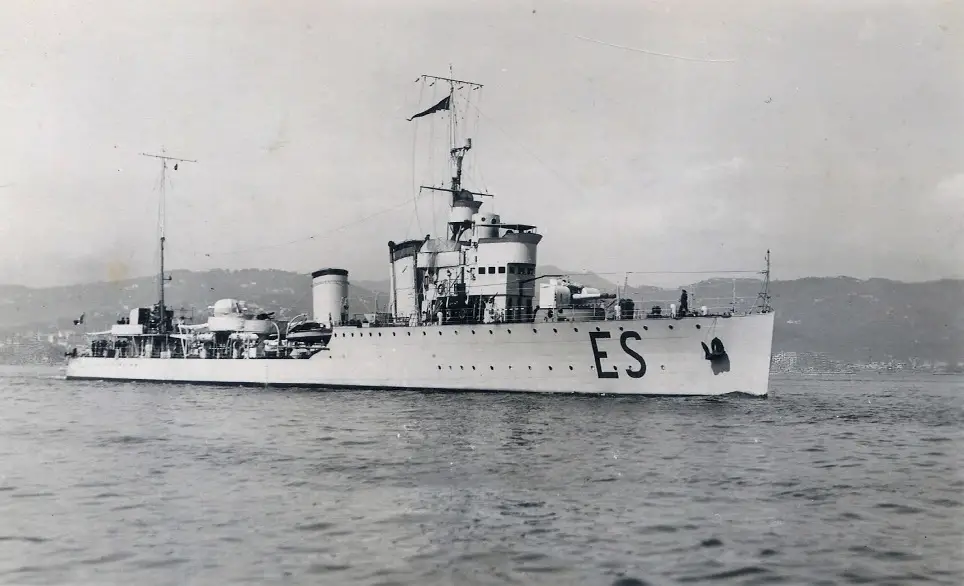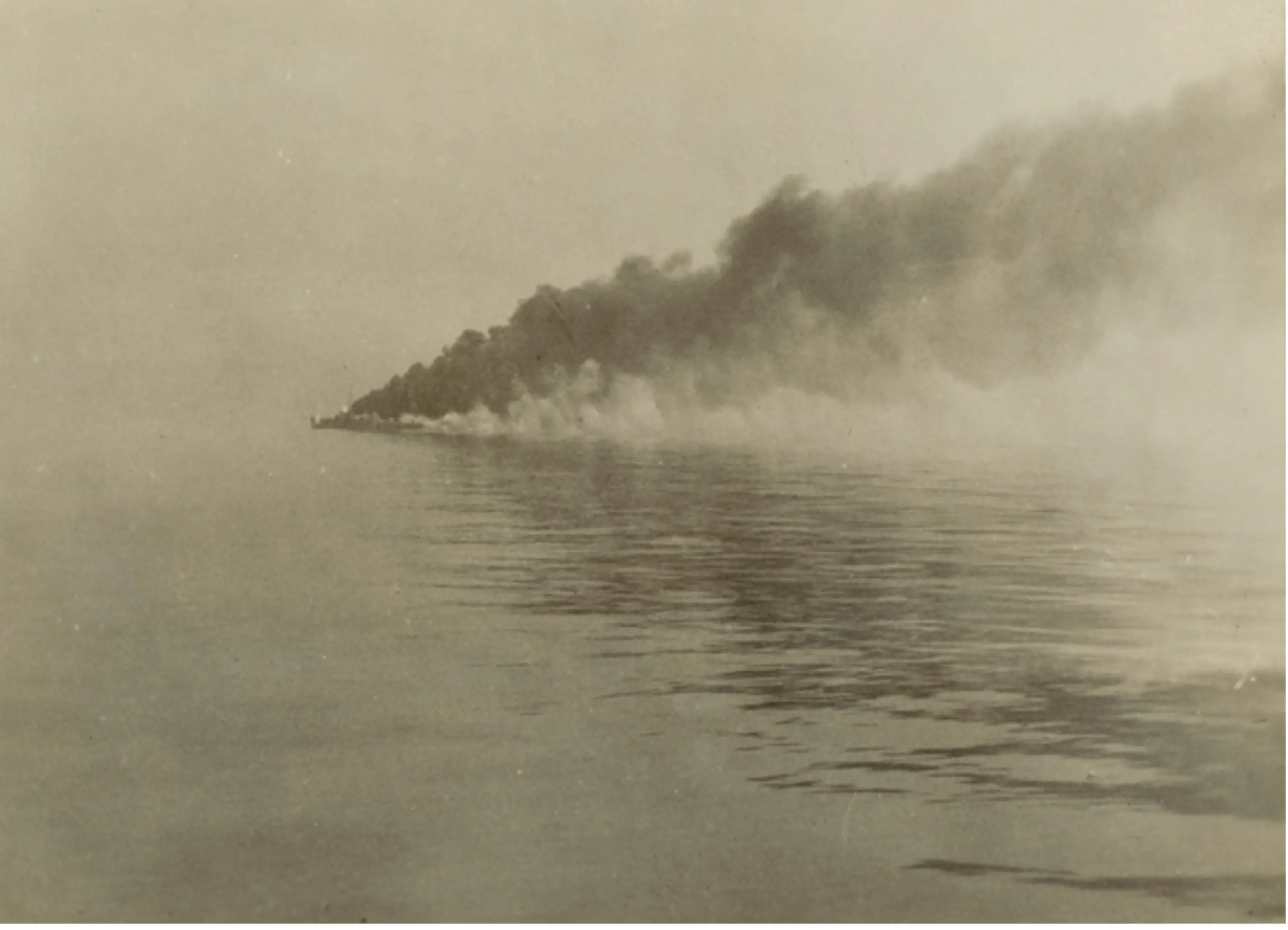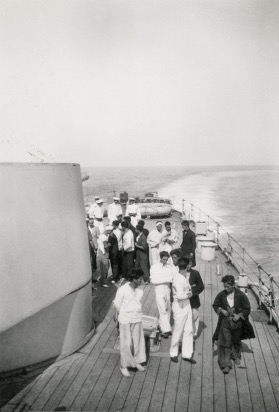
One of the first encounters between Italian and British ships, or as some described it “5,000 shells to sink a small destroyer”
The first convoy
In the event of a war against both France and Great Britain, Italian military planners considered that it was not feasible to keep it open the maritime supply routes to Libya. After the capitulation of France, in late June 1940, the Italian navy (Regia Marina) began the preparation of a series of convoys destined to carry supplies and reinforcements to the army forces deployed in Libya.
On the 27th of June, the II destroyer flotilla, consisting of the ships Espero, Zeffiro and Ostro, left Taranto to carry out a quick transport mission to Benghazi. They carried ten Breda anti-aircraft guns (20/65), 162 military personnel and 120 tons of ammunition (around 450.000 20mm rounds).
The three destroyers belonged to the Turbine class, one of the first destroyer designs of the interwar period, characterised by stability issues and generally weak armament. Able to reach (on paper) 36 knots, their engines suffered from their prolonged use, being in service since 1928.
The clash
On the morning of the 28th of June, a British Sunderland flying boat sighted the Italian ships, not far from the Greek coast, and proceeded on a southeast route. The Mediterranean fleet was at sea while protecting a series of convoys moving from the Aegean towards Egypt. The 7th cruiser squadron under Vice Admiral John Tovey was detached westwards to hunt down the Italians. It consisted of the light cruisers Orion, Neptune, Sydney, Liverpool and Gloucester.
At 18:33, Tovey’s ships sighted the Italian destroyers, and soon after they opened fire at a 20km distance with their 6-inch guns. The Italian ships soon turned to the southwest, trying to escape their superior enemies thanks to their advantage in speed. However, the lead Italian ship, the Espero, suffered from a boiler failure and could not sail faster than 25 knots. The age of the ship and its cargo probably contributed to this inconvenience. Realizing that his ship was doomed, Captain Enrico Baroni signaled the Zeffiro and Ostro to disengage at full speed, while he attempted to cover their retreat with smoke screens.

Figure 1 Espero making smoke, photo taken from HMAS Sydney (Australian War Memorial)
A rain of 6-inch shells fell around the Espero, with the British cruiser quickly closing the distance. The Espero manoeuvred to attack the Orion and launched three torpedoes that missed but forced the Orion to change course for a while. At 19:20, the cruiser Liverpool was only 12,000 meters from the Espero but still could not score a hit. It was on the contrary the small Italian ship that landed a 120 mm shell on the enemy cruiser, causing minor splinter damage, which however caused the abandon the chase, followed by the Gloucester. At this point, Orion, Sydney and Neptune resumed the attack and at 20:00, they managed to cripple the Espero, hitting the engine compartment.

Figure 2 HMS Orion
The Italian destroyer eventually slowed down and the Sydney came closer to finish off the Espero, which in turn returned fire with the remaining weapons. Some final salvos from Sydney sealed the fate of the brave Italian ship that soon capsized and sunk. In those final moments, Captain Baroni made sure that all his men had left the sinking ship and when the last barge was about to leave, he refused to abandon his ship and got back to the bridge. Some of the survivors said they heard a pistol shot. He was posthumously awarded the gold medal for military valor.
Epilogue
For around 10 minutes, Tovey kept pursuing the other two Italian destroyers before deciding to end the action. Darkness was approaching and the British squadron had consumed an insane number of shells to sink the Espero (5,000). Her sacrifice helped the other two ships to reach their destination unharmed.
HMAS Sydney remained in the area for some time, rescuing some 47 men from the Espero. Before abandoning the area, knowing that more survivors were still in the water, the Sydney left a small wooden cutter in the water, filled with some water and food supplies, a signal pistol and a compass.
Around 36 survivors found the cutter and stayed there for 14 days before being rescued by the submarine Topazio, that had arrived on scene following the signal of an Italian aircraft. Sadly, thirst and wounds had depleted the men and only 6 of them survived long enough before the arrival of the Topazio.

Figure 3 Italian survivors on board HMAS Sydney (Australian War Memorial)
After the sinking of the Espero, Ostro and Zeffiro reached Benghazi on the 29th of June and were later lost during the summer due to torpedo bomber attacks. On the British side, the high shell consumption forced Admiral Cunningham, commander of the Mediterranean fleet, to postpone some convoy escort operations towards Malta, waiting for his cruisers to resupply.
Sources
Cernuschi, E. (2023). A colpi di cannone – Tomo I. Rivista Marittima .
Giorgerini, G. (2001). La Guerra Italiana sul mare, La marina tra vittoria e sconfitta 1940-1943.
O’Hara, V. P. (2008). Struggle for the Middle Sea: The Great Navies at War in the Mediterranean Theater, 1940-1945.